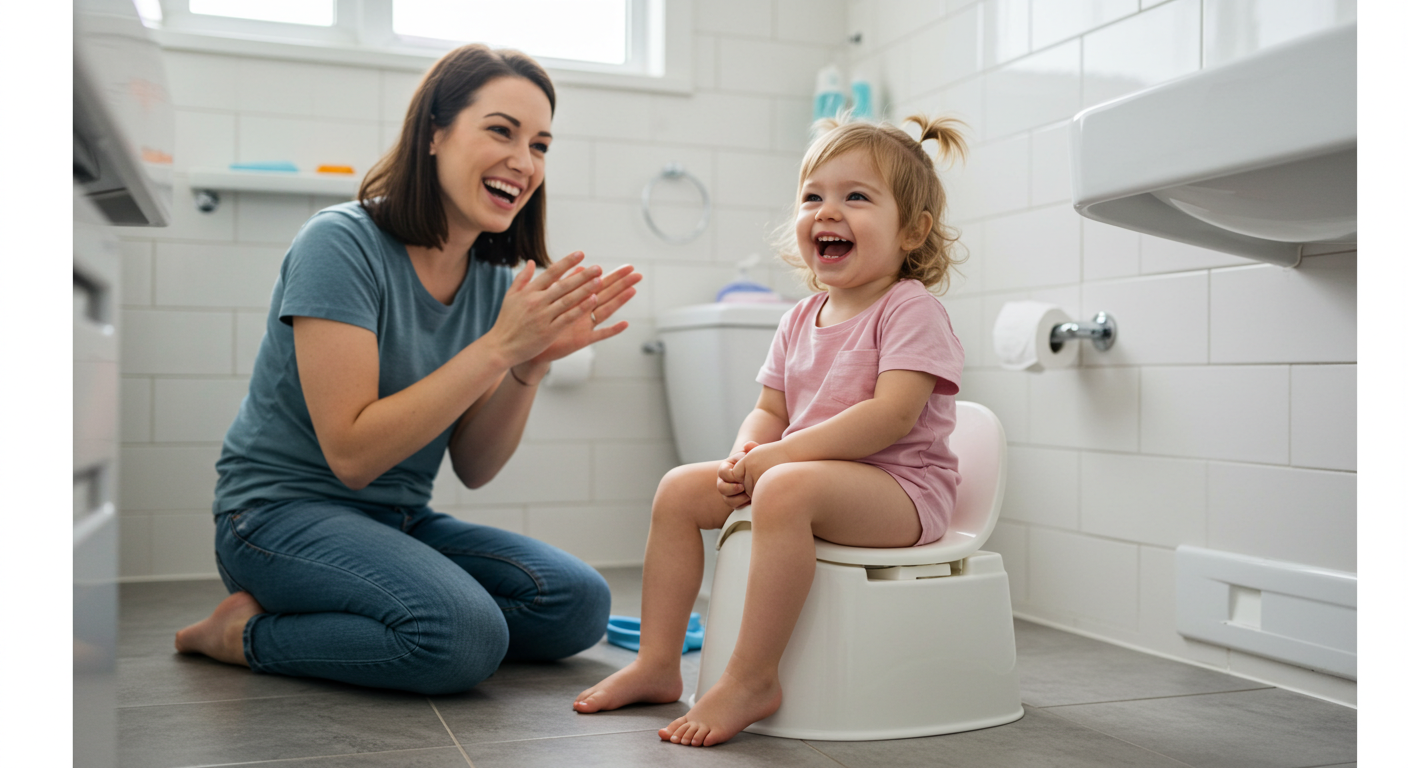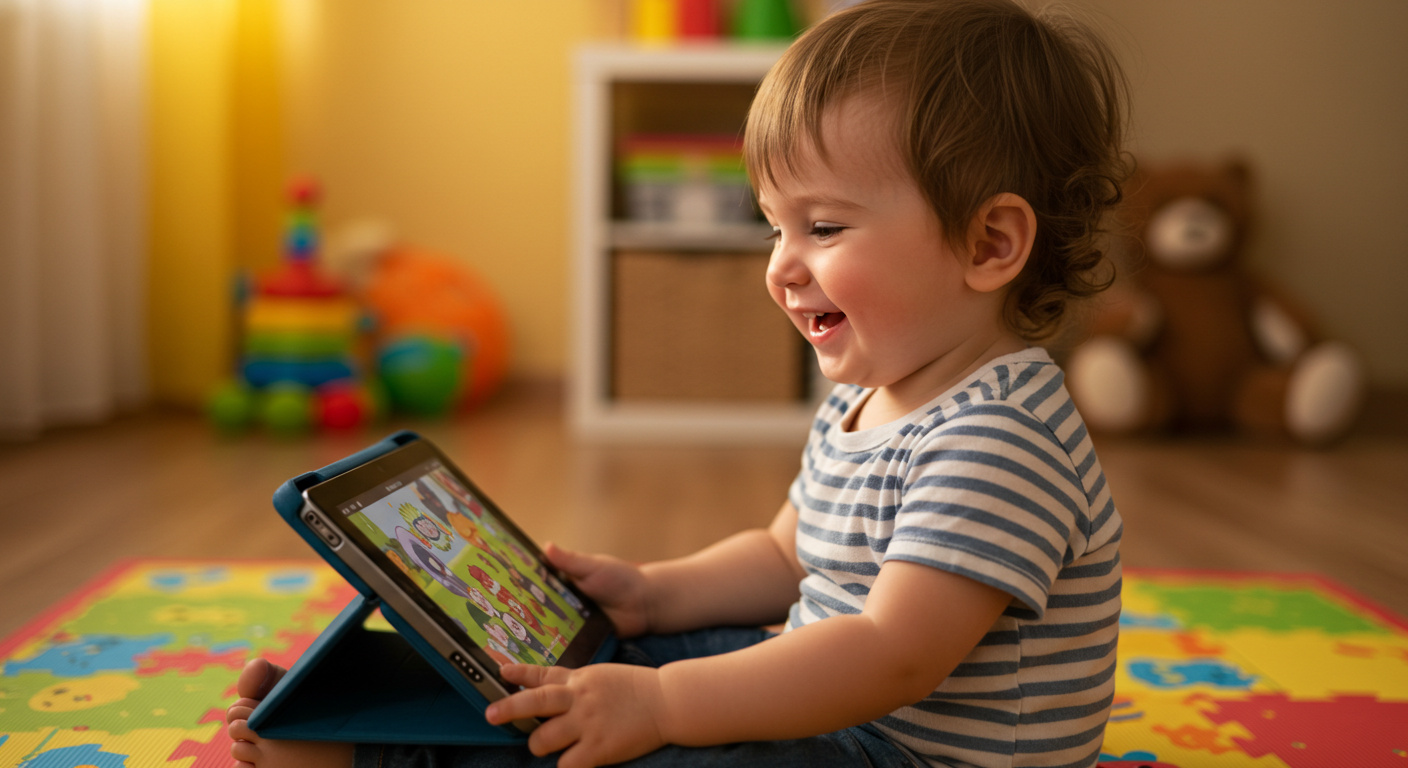Tips on Potty Training:
Understanding the Maintenance Phase- Day 2

Congratulations! If your child successfully urinated or had a bowel movement on the potty without being prompted, you’ve reached a major milestone—this is a huge step forward. Day Two of the potty training in three days process centers on maintaining that early success and building your child’s independence. This is often referred to as the maintenance phase, and it’s where consistency and encouragement truly pay off. During this phase, it’s important to apply practical tips on potty training, such as gradually increasing the time between potty trips, celebrating successes with praise and rewards, and reinforcing dry behavior with frequent positive feedback. These strategies help strengthen your child’s new habits and ensure they’re on track to becoming fully potty trained. If you didn't get a chance to review Day One for Potty Training in Three Days of the process, be sure to check that page out first!
The goal of Day Two is to stretch your child’s ability to stay dry and continue using the potty consistently without frequent reminders. This is where the foundation built on Day One becomes solidified. Even if your child needed a bit more time to have that first independent potty success, you can still begin integrating aspects of this phase while continuing support.
Day Two is still structured, but you can begin to ease up slightly on the frequency of bathroom visits. However, consistency and positivity remain essential.
What You’ll Need for Day Two

- The same potty or seat insert used on Day One
- Free potty charts (downloadable if you haven’t already)
- Reward system: small treats, stickers, high fives
- Your child’s favorite small toys for positive reinforcement
- Extra clothing and cleanup supplies
- Timer or smartphone alarm for tracking intervals
Day Two Routine: Tips on Potty Training for Continued Success
1. Gradually Increase Time Between Bathroom Visits
On Day One, you brought your child to the potty every 15 minutes. On Day Two, begin stretching that interval to 30 minutes. This helps build your child’s bladder control and awareness while still reinforcing consistent potty usage.
Use a timer to remind yourself and your child. Avoid letting too much time pass between attempts, especially if your child hasn’t urinated recently. During this time continue using potty training videos as part of the routine.
2. Continue Using Fluids to Encourage Practice
Maintain a good level of fluid intake to create natural opportunities to use the potty. Keep drinks available and encourage sips throughout the day. Avoid sugar-laden drinks that may lead to hyperactivity.
3. Celebrate Every Success
Just like Day One, you should go all out with praise every time your child successfully uses the potty:
- Clap your hands
- High-five
- Sing a celebratory song: “(Child’s name) went potty on the toilet!”
- Give your child a small reward or sticker
- Let them mark their potty chart
Celebration reinforces the behavior and keeps your child excited about their progress.
4. Reward Dryness Often
Every 15–20 minutes, check if your child’s underwear is dry. If it is, say something encouraging like, “Great job staying dry!” Then offer a small reward or sticker. Dry checks increase awareness and give positive reinforcement for control and success.
5. Manage Accidents with Patience
Accidents are still normal during Day Two. Stay calm and avoid showing disappointment:
- Say in a neutral voice, “Uh-oh, it looks like we need to practice going potty.”
- Practice going to the potty from different parts of the house two times in a row
- Help your child pull down pants and sit on the toilet during each practice run
- If your child was resistant to practice on Day One, limit it to one practice sit to avoid frustration
- Use simple phrases: “Pee and poop go in the potty.”
Always respond with calm consistency. Avoid reverting to diapers or disposable training pants (except for nighttime).

6. Offer Limited Toy Access as Rewards
Let your child access a favorite small toy after each successful potty trip for 10-15 minutes. Examples include:
- A small action figure
- A stuffed animal or favorite doll
- A coloring book
- A fun tablet game or favorite video
Outside of using for reinforcement, keep non-potty-related toys out of reach to maintain focus on the training process.
7. Encourage Independence
Start prompting your child with gentle questions instead of commands:
- “Do you need to go potty?”
- “Are you still dry?”
- “Let’s try to go potty before lunch.”
Use natural opportunities to integrate bathroom visits into your daily routine (before meals, naps, or outings).
8. Continue Structured Potty Activities
Keep offering potty-related activities between bathroom visits. These include:
- Coloring pages related to potty training
- Looking at picture books about using the toilet
- Singing songs or making up stories about going potty
These activities maintain engagement and motivation while reinforcing new habits.
9. Transition to Light Guidance
As Day Two progresses and your child is more consistent, reduce verbal prompting and give them space to initiate on their own. The goal is self-initiation without reminders by Day Three or soon after.
Encourage your child to recognize the feeling of needing to go. When they tell you without prompting, reward them with praise and chart progress.
Troubleshooting Common Issues
- Refusing to sit: Keep potty time fun. Offer a story, song, or let your child hold a small toy while sitting. If you are really struggling I recommend my ebook on potty training.
- Regression after accidents: Reassure your child and reinforce with praise and practice runs.
- Overwhelm or frustration: Take short breaks while maintaining routine. Never punish accidents.
Day Two Wrap-Up: More Tips on Potty Training
Day Two is about building on success and creating confidence. You’re helping your child go from being prompted to initiating on their own. By keeping the environment positive and consistent, your child will begin to understand that using the potty is a normal part of the day.
Continue using your free downloadable potty chart and reward system, and don't forget to print and display your Big Kid Certificate if your child has made significant progress.
Once your child is regularly using the potty at home and staying dry for extended periods, you’re ready for the final day for tips on potty training—Day Three: Potty Training in Public Places.
If you haven't already, be sure to check out my ebooks, now on Amazon!

